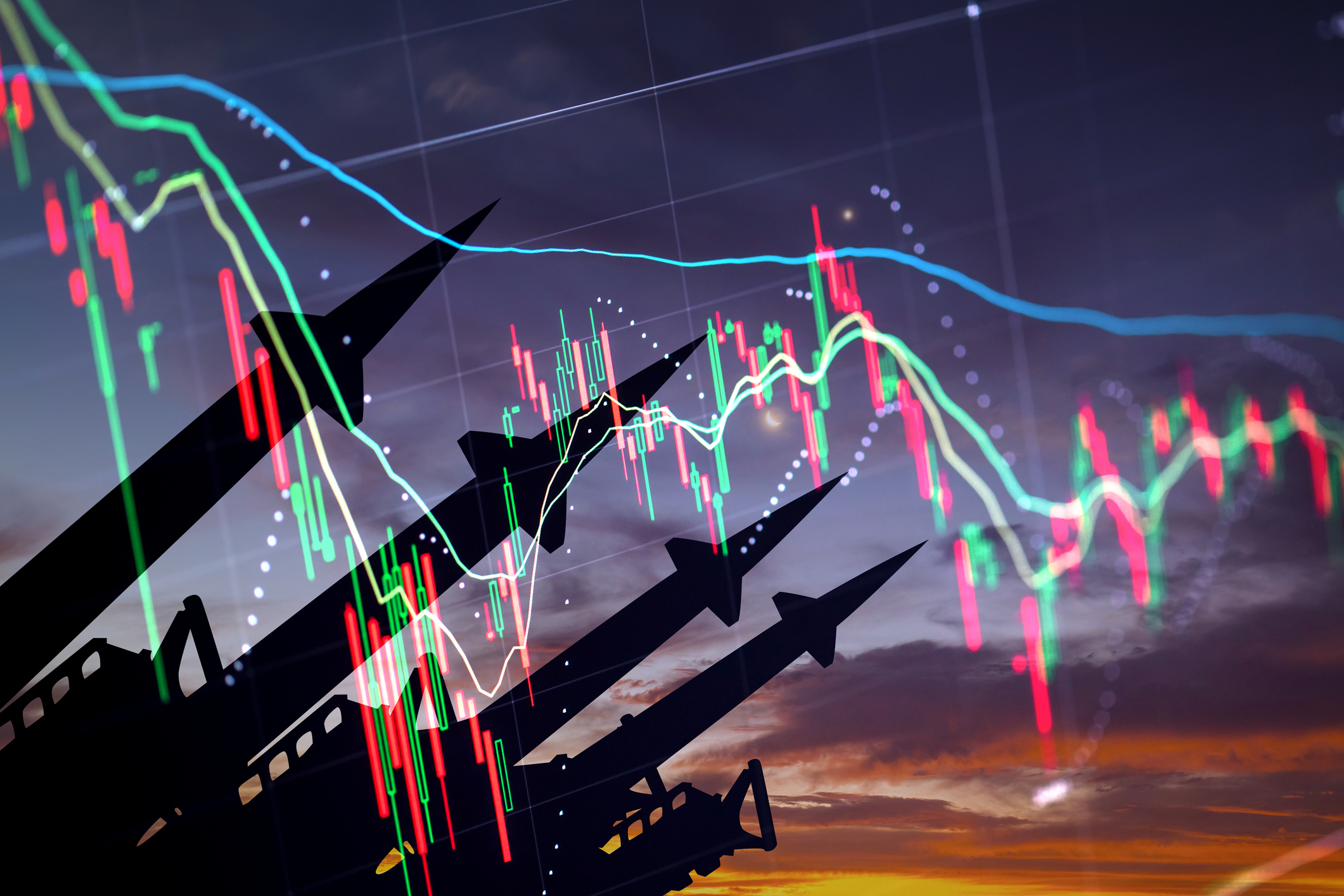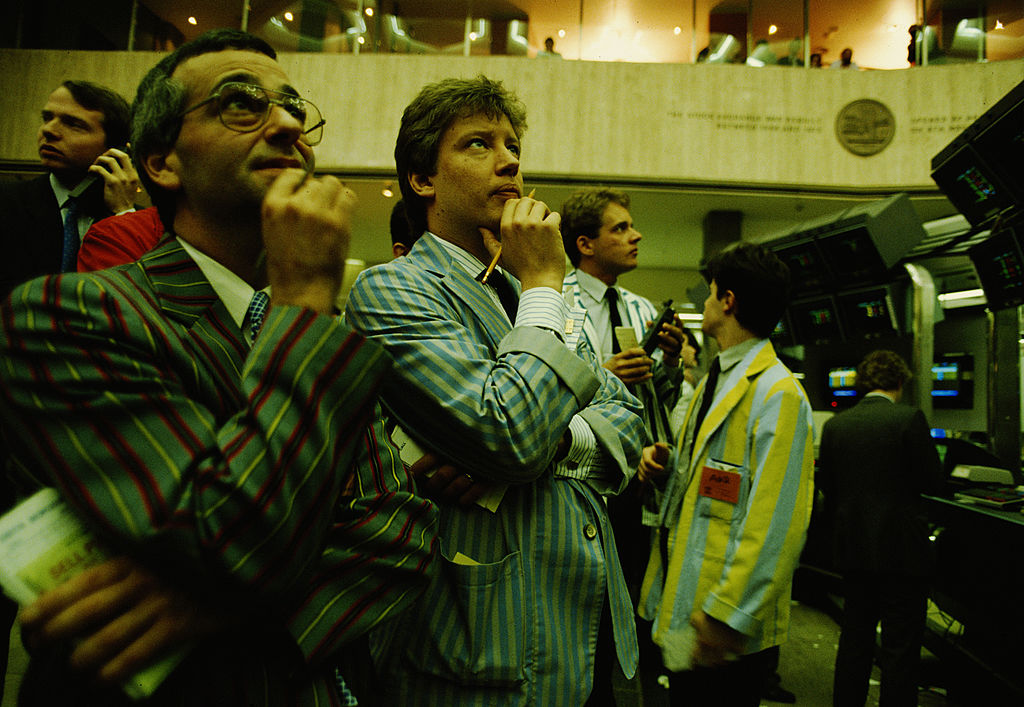UK stocks: how the FTSE 100 is finding its feet again
The FTSE 100, Britain’s blue-chip stockmarket index, has undergone constant churn in the 37 years since its inception, says Max King. But it is now starting to catch up with its global counterparts.

The news late last year that the value of a single US company, Apple, had overtaken that of the entire FTSE 100 index marked another milestone in the long decline of the UK equity market. How has this happened, and is the trend reversing? If so, then the many British investors with a home bias could recover some of their missed performance relative to global markets.
It is 37 years since the FTSE 100 was first constructed as a market capitalisation-weighted index of the largest 100 companies with a full listing on the London Stock Exchange. Until then, investors had to make do with the FT30 index, unweighted, idiosyncratically composed and calculated only every hour, and the All-Share index, calculated daily.
The combined market value of the initial 100 companies in 1984 was just over £100bn and the index was based at 1,000. At the end of January 2021, it stood at 6,407, representing an annual gain of 5.1%. But it was valued at over £1,500bn, reflecting an annual growth rate of 7.6%. This implies that 33% of the growth in value of the index has come from net share issuance.
MoneyWeek
Subscribe to MoneyWeek today and get your first six magazine issues absolutely FREE

Sign up to Money Morning
Don't miss the latest investment and personal finances news, market analysis, plus money-saving tips with our free twice-daily newsletter
Don't miss the latest investment and personal finances news, market analysis, plus money-saving tips with our free twice-daily newsletter
The index reached 6,930 at the end of 1999 and only passed that level again at the end of 2016, peaking at 7,877 in May 2018. Now, it is only 11% above the level of 15 years ago. Between the FTSE 100’s inception and the end of 2005, UK equities had returned a compounded annual average of 12.5% (8.5% in real terms). Since then, the annual total return of the FTSE 100 has been 4.7%, before tax, only 2% ahead of inflation.
In 1984, the largest company in the index was BP, valued at £7.4bn, and the 100th was valued at just £100m. Now, the largest is Unilever at £104bn and the cut-off for the 100th is around £3.8bn. Only 40% of the capital of Royal Dutch Shell, then number two, was included in 1984, valued at £6.5bn. Now, both of Shell’s share classes are included, valued at £102bn. It’s still number two, followed by AstraZeneca at £95bn. BP’s market value is now £51bn, but it acquired Amoco, ARCO, Britoil and Burmah (BP’s founding shareholder in 1905) along the way, while the government sold the 50% stake it held in 1984.
The FTSE 100 is the Premier League of stockmarket indices
Every quarter, two or three underperforming constituents are dropped from the index and replaced. As in the Premier League, most of those exiting soon return and most of those promoted depart a few quarters later, with only the takeover victims disappearing forever. But over time the changes are striking. By 2005, only 42 of the original constituents were still in the index and only 23 had been in it throughout.
Now, those 42 are down to 28. Wikipedia lists 277 past constituents. Many, such as Rowntree, Boots, BOC and GKN were taken over. Others, such as Wellcome, Wimpey and Sun Alliance, merged to form new FTSE 100 companies. Some, such as Maxwell Corporation, Ferranti and Polly Peck collapsed due to fraud, or simply went bankrupt (Intu, Debenhams and British & Commonwealth). The list includes now-forgotten companies, such as Baltimore, Psion and Thus, which proved to be flashes in the pan. Many more are still listed but not in the FTSE 100, either because they have tripped up but could return, such as Serco, Capita and M&S, or because they have simply been left behind (Hiscox and Alliance Trust).
Bank stocks and oil giants are fading
The survivors are either a shadow of their former selves or have changed radically. BT was once the largest company in the FTSE, but Unilever’s market value is now more than eight times bigger. The banks are no longer giants of the market and the oil majors are fading. Reed and Pearson were conglomerates, but are now focused on publishing. British American Tobacco (BAT) disposed of its financial services, retailing and cosmetics arms and Whitbread no longer brews beer. In 1984, Imperial was a brewer, a pub owner, a producer of frozen and snack foods and a UK-only tobacco company. Now it is a global tobacco group.
Digging deeper, however, shows that there has been rather more continuity. Distillers was acquired (controversially) by Guinness, which then merged with Grand Metropolitan to form Diageo, spinning off Intercontinental Hotels to form two current FTSE 100 constituents. Great Universal Stores has gone, but two of its businesses, Experian and Burberry, are prospering. ICI is no longer with us, but its pharmaceutical division, Zeneca, now thrives within AstraZeneca. Initial Services, once a part of BET, is now half of Rentokil Initial.
Many current FTSE 100 constituents were either promising mid-caps in 1984 (Smiths Industries, Bunzl, SEGRO), or still small caps (Spirax Sarco, Weir, Halma, Ashtead, Berkeley Homes). Others were not listed or even founded then, including London Stock Exchange, Hargreaves Lansdown, Just Eat, Ocado, AVEVA and Rightmove. Herein lies a paradox: though nearly all of the FTSE 100’s underperformance against Wall Street has occurred in the last 15 years, there is more evidence of innovative companies now than there was then.
A lack of organic growth
In 2005, the weaknesses of the UK market were all too apparent. Very few companies had climbed into the FTSE 100 primarily through organic growth; among the few who had were Sage, Next and Capita, and the latter subsequently fell flat on its face. WPP, which made supermarket trolleys until Martin Sorrell took control, doesn’t count as he built this global marketing and advertising giant by acquisition.
Fifteen companies (up from three in 1984, but down from a peak of over 20) were the result of privatisation. These had benefited from their transfer to private ownership, but were running out of steam and into regulatory strife. Only seven remain in the index. Demutualisations, such as Northern Rock, Alliance & Leicester and Halifax, accounted for another six, but this proved to be the road to ruin.
Many companies had grown through takeovers, despite ample academic evidence that mergers and acquisitions were more likely to destroy than to add value. BTR had risen from small beginnings to be one of the largest companies in the market through the acquisition and subsequent rationalisation of underperforming companies, but, as Invensys, was barely surviving in 2005. The equally acquisitive Hanson group had broken itself up with Imperial as the sole listed survivor. Electronics and defence giant GEC remained wary of acquisitions, debt and capital investment until it threw caution to the wind, changed its name to Marconi and committed corporate suicide via a spending spree in the technology bubble.
Other participants in the merger mania of the late 1990s, such as the oil majors, survived as unwieldy corporate dinosaurs, destined for long-term underperformance. Vodafone had been spun out of Racal Electronics as one of three companies to be awarded a UK mobile licence in the 1980s, but expanded globally by acquisition. The share price of Glaxo, which had absorbed Wellcome and SmithKline Beecham, was suffering from indigestion and is still 38% below its 1999 peak. The banks were busy acquiring and overexpanding. The accepted wisdom in boardrooms was that companies had either to acquire or be acquired.
While the FTSE 100 contained just one technology stock in 2005, the S&P 100 contained 19. It also included 14 healthcare companies, including some, such as Amgen and Genentech, which had emerged from biotech status. Despite the parallel boom in mergers, US companies had relied far less on share issuance for growth. Those companies that were highly acquisitive, such as GE, then the largest US company, have paid a heavy price in subsequent underperformance.
Though there is now far more innovation in the FTSE 100 than 15 years ago, structural weaknesses remain. Technology comprises 28% of the S&P 500 and healthcare another 14%. Technology accounts for nearly 10% of the MSCI Europe (ex UK) index and healthcare nearly 16%, but just 1.3% and 10% in the UK. Energy is 9% and materials (mostly mining) 13% of the FTSE 100, but in the US these two sectors comprise just 5% of the market; in Europe, 10%.
An improving outlook
The FTSE 100 still contains eight miners, down from 12 in 2011. Some of these maintain little more than an office here. For them, a UK listing is a flag of convenience, preferable to a home listing in a small market. This also applies to Mondi (Austria), Smurfit Kappa (Ireland), and Coca-Cola HBC (Greece). It undermines the concept of the FTSE 100 as a UK index, but, following some past governance mishaps, the stock exchange has tightened up on the listing of overseas companies, to the benefit of index performance.
While the FTSE 100 has slumbered, the mid-cap FTSE 250 has done much better. It was launched in 1992, but dated back to the end of 1985, when it was set to equal the FTSE 100. At the end of January 2021 it stood at 20,228, an annual gain of 8.5%, 3.6% ahead of the FTSE 100. As the mid-cap companies move into the FTSE 100, large-cap performance should improve, provided that the promoted companies maintain their momentum. This has been a slow process, more than countered by the stagnation of the mega caps.
From here, the outlook is better. More growth companies are likely to be promoted, there are many more quality companies in the index than before and the drag from the dead-weights will lessen. Continued stagnation of these is not inevitable, as shown by the reinvigoration of AstraZeneca. Others may follow, while the prospects for the banks, the oil majors and the Covid-19 sufferers will surely improve. The recent improvement in the relative return of the FTSE 100 is no fals
Get the latest financial news, insights and expert analysis from our award-winning MoneyWeek team, to help you understand what really matters when it comes to your finances.

Max has an Economics degree from the University of Cambridge and is a chartered accountant. He worked at Investec Asset Management for 12 years, managing multi-asset funds investing in internally and externally managed funds, including investment trusts. This included a fund of investment trusts which grew to £120m+. Max has managed ten investment trusts (winning many awards) and sat on the boards of three trusts – two directorships are still active.
After 39 years in financial services, including 30 as a professional fund manager, Max took semi-retirement in 2017. Max has been a MoneyWeek columnist since 2016 writing about investment funds and more generally on markets online, plus occasional opinion pieces. He also writes for the Investment Trust Handbook each year and has contributed to The Daily Telegraph and other publications. See here for details of current investments held by Max.
-
 The best and worst performing UK stocks of 2025 as FTSE 100 approaches record year
The best and worst performing UK stocks of 2025 as FTSE 100 approaches record yearThe blue-chip index is heading for another top year despite investors steering clear of UK equity funds
-
 Which sectors are best to invest in for 2026?
Which sectors are best to invest in for 2026?Investment trust portfolio managers give their views on the sectors and regions they expect to outperform in 2026.
-
 Big Short investor Michael Burry closes hedge fund Scion Capital
Big Short investor Michael Burry closes hedge fund Scion CapitalProfile Michael Burry rightly bet against the US mortgage market before the 2008 crisis. Now he is worried about the AI boom
-
 The global defence boom has moved beyond Europe – here’s how to profit
The global defence boom has moved beyond Europe – here’s how to profitOpinion Tom Bailey, head of research for the Future of Defence Indo-Pac ex-China UCITS ETF, picks three defence stocks where he'd put his money
-
 Profit from a return to the office with Workspace
Profit from a return to the office with WorkspaceWorkspace is an unloved play on the real estate investment trust sector as demand for flexible office space rises
-
 New frontiers: the future of cybersecurity and how to invest
New frontiers: the future of cybersecurity and how to investMatthew Partridge reviews the key trends in the cybersecurity sector and how to profit
-
 An “existential crisis” for investment trusts? We’ve heard it all before in the 70s
An “existential crisis” for investment trusts? We’ve heard it all before in the 70sOpinion Those fearing for the future of investment trusts should remember what happened 50 years ago, says Max King
-
 8 of the best properties for sale with wildlife ponds
8 of the best properties for sale with wildlife pondsThe best properties for sale with wildlife ponds – from a 16th-century house in the Ashdown Forest, to a property on Pembrokeshire’s Preseli Hills
-
 Why a copper crunch is looming
Why a copper crunch is loomingMiners are not investing in new copper supply despite rising demand from electrification of the economy, says Cris Sholto Heaton
-
 Where to look for Christmas gifts for collectors
Where to look for Christmas gifts for collectors“Buy now” marketplaces are rich hunting grounds when it comes to buying Christmas gifts for collectors, says Chris Carter
